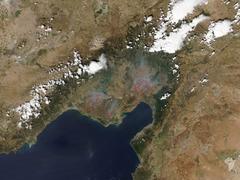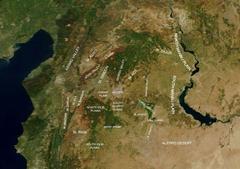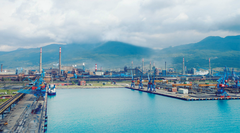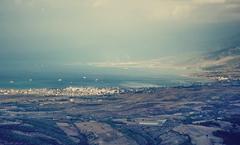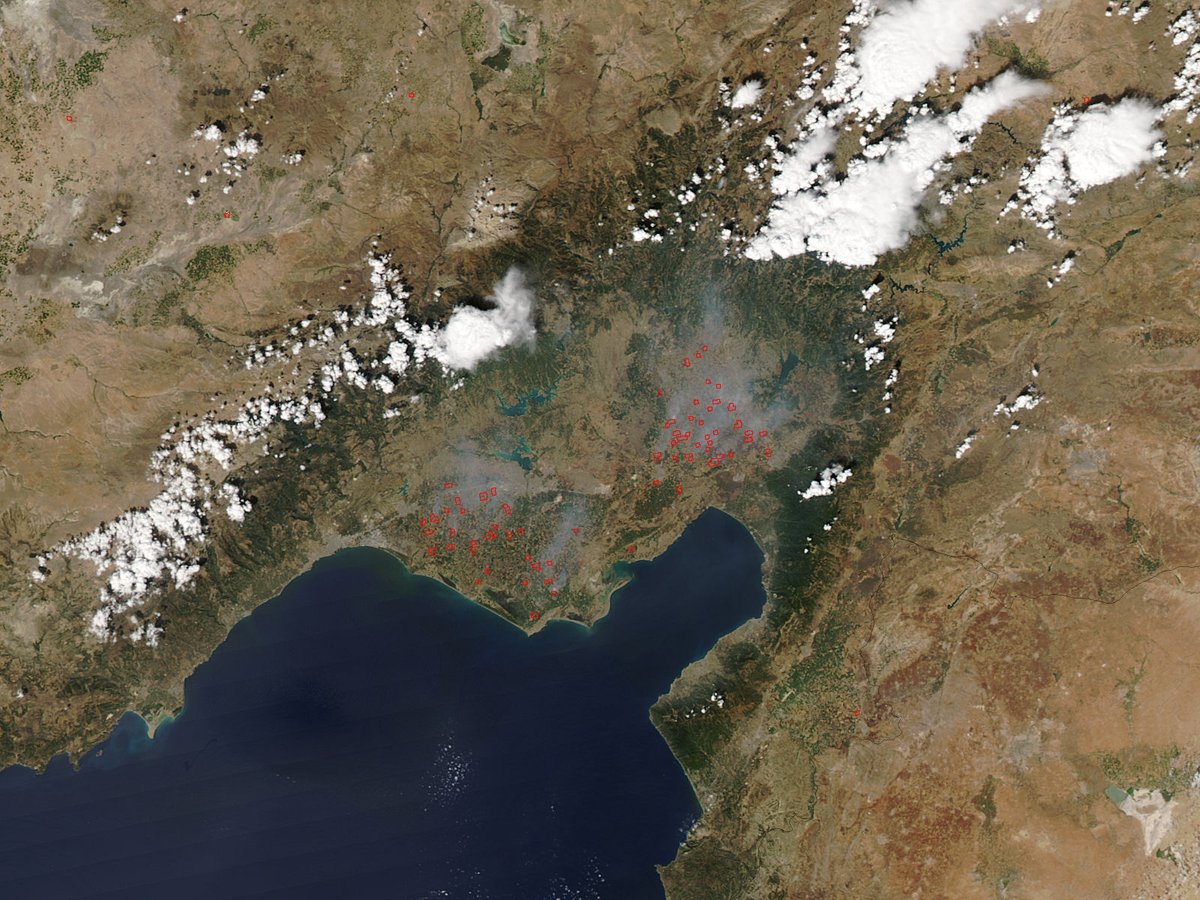
Comprehensive Guide to Visiting İskenderun Körfezi, İskenderun, Türkiye
Date: 01/08/2024
Introduction
İskenderun Körfezi, also known as the Gulf of Alexandretta, is an enchanting coastal region located on the eastern Mediterranean coast of Turkey. Its historical roots stretch back to 333 BC when it was founded by Alexander the Great to commemorate his victory over the Persian Empire at the Battle of Issus (Britannica). Over the centuries, the region has been shaped by numerous civilizations, including the Romans, Byzantines, and Ottomans, each leaving an indelible mark on its cultural and architectural landscape. Today, İskenderun Körfezi stands as a vibrant city that seamlessly blends its rich historical heritage with modern economic and cultural significance.
The strategic location of İskenderun Körfezi has historically made it a vital port and trading hub. It served as a crucial gateway for overland trade from Iran, India, and eastern Asia during the Ottoman period (Britannica). In the modern era, the port continues to play a significant role in Turkey’s economy, supported by an industrial landscape that includes steel factories, cement factories, and power stations (Wikipedia).
Beyond its economic importance, İskenderun Körfezi is a cultural melting pot that reflects the diverse influences of the various civilizations that have inhabited the region. This cultural richness is evident in its cuisine, festivals, and historical landmarks. Visitors to İskenderun Körfezi can explore a range of attractions, from ancient ruins and Ottoman-era buildings to modern amenities like vibrant markets and scenic waterfronts.
This guide aims to provide a comprehensive overview of İskenderun Körfezi, covering its historical significance, key attractions, travel tips, and more. Whether you are a history enthusiast, a cultural explorer, or simply looking for a unique travel experience, İskenderun Körfezi offers something for everyone.
Table of Contents
- Introduction
- Historical Background
- Economic Development
- Cultural Significance
- Key Historical Sites
- Modern Attractions
- Visitor Tips
- Guided Tours and Photographic Spots
- FAQ
- Conclusion
Historical Background
Foundation and Early History
İskenderun, historically known as Alexandretta, is a city with a rich and diverse history that dates back to ancient times. The city was founded by Alexander the Great in 333 BC to commemorate his victory over the Persian Empire at the Battle of Issus. This battle was a significant event in Alexander’s campaign to conquer the Persian Empire, and the establishment of Alexandretta served both as a strategic military base and a symbol of his triumph (Encyclopedia.com).
Roman and Byzantine Periods
Following its foundation, Alexandretta became an important city within the Roman Empire. Its strategic location on the Mediterranean coast made it a vital port for trade and military operations. The city continued to thrive under Roman rule, benefiting from the empire’s extensive trade networks and infrastructure. During the Byzantine period, Alexandretta remained a significant urban center, although it faced challenges from various invading forces over the centuries.
Islamic Conquests and Ottoman Era
In the 7th century, the city came under the control of the Rashidun Caliphate during the early Islamic conquests. It later became part of the Umayyad and Abbasid Caliphates, serving as a key port in the Islamic world. The city’s importance continued into the Ottoman period, which began in 1515 when Selim I captured it. Under Ottoman rule, İskenderun (as it was then known) became a crucial hub for trade and military operations, particularly due to its strategic location on the Mediterranean Sea (Encyclopedia.com).
20th Century and Modern Era
In the early 20th century, İskenderun’s political status underwent significant changes. Following World War I, the city was transferred to the French Syria League of Nations mandate as part of the Sanjak of Alexandretta in 1920. This period of French control was relatively short-lived, as the region was returned to Turkey in 1939, becoming part of the Hatay Province. This transfer was a result of complex geopolitical negotiations and agreements between France and Turkey (Encyclopedia.com).
Economic Development
In the modern era, İskenderun has developed into a major economic center in Turkey. The city is home to a large steel plant, which plays a significant role in the local and national economy. Additionally, İskenderun serves as the terminus for an important oil pipeline, further cementing its status as a key industrial and commercial hub. The port of İskenderun is one of the principal Turkish ports on the Mediterranean, facilitating extensive maritime trade and contributing to the city’s economic growth (Encyclopedia.com).
Cultural Significance
İskenderun’s rich history is reflected in its diverse cultural heritage. The city’s historical sites and monuments, such as ancient ruins and Ottoman-era buildings, offer a glimpse into its storied past. The blend of different cultural influences, from ancient Greek and Roman to Islamic and Ottoman, is evident in the city’s architecture, cuisine, and traditions. Visitors to İskenderun can explore these cultural landmarks and experience the unique blend of historical and modern elements that define the city.
Key Historical Sites
The Battle of Issus Site
Located near İskenderun, this site commemorates Alexander the Great’s decisive victory over the Persian Empire. It is a significant historical landmark that attracts history enthusiasts and scholars. Visiting Hours: 9 AM - 5 PM. Tickets: $10 for adults, $5 for children.
Ottoman-era Buildings
The city boasts several well-preserved Ottoman-era structures, including mosques, baths, and administrative buildings. These sites offer insights into the architectural and cultural heritage of the Ottoman period. Visiting Hours: 8 AM - 6 PM. Tickets: Vary by site, generally $5-$10.
Ancient Ruins
Various ancient ruins in and around İskenderun provide a window into the city’s early history. These archaeological sites are of great interest to both tourists and researchers. Visiting Hours: 8 AM - 4 PM. Tickets: $5 for adults, free for children under 12.
Modern Attractions
In addition to its historical significance, İskenderun offers a range of modern attractions and amenities for visitors. The city’s vibrant waterfront, bustling markets, and diverse dining options make it a popular destination for tourists. Visiting Hours: Generally 9 AM - 9 PM for most attractions. Tickets: Free entry for most public areas.
Visitor Tips
- Best Time to Visit: The best time to visit İskenderun is during the spring and autumn months when the weather is mild and pleasant. Summers can be quite hot, while winters are generally mild with occasional rainfall.
- Local Cuisine: İskenderun is known for its delicious seafood and traditional Turkish dishes. Visitors should try local specialties such as İskenderun kebab and fresh fish from the Mediterranean.
- Transportation: The city is well-connected by road and rail, making it easily accessible from other parts of Turkey. The nearest airport is Hatay Airport, which is approximately 45 kilometers from İskenderun.
- Accommodation: İskenderun offers a range of accommodation options, from luxury hotels to budget-friendly guesthouses. It is advisable to book in advance, especially during peak tourist seasons.
- Cultural Etiquette: Visitors should be respectful of local customs and traditions. Modest clothing is recommended when visiting religious sites, and it is customary to remove shoes before entering mosques.
Guided Tours and Photographic Spots
For a more in-depth experience, consider booking a guided tour. Local guides can provide valuable insights into İskenderun’s history and culture. Popular photographic spots include the waterfront, ancient ruins, and Ottoman-era buildings.
FAQ
Q: What are the visiting hours for İskenderun’s historical sites?
A: Most historical sites are open from 8 AM to 6 PM, but it’s advisable to check specific sites for exact timings.
Q: Are there any entrance fees for historical sites in İskenderun?
A: Yes, entrance fees vary by site, generally ranging from $5 to $10.
Q: What is the best time of year to visit İskenderun?
A: The best time to visit is during spring and autumn when the weather is mild and pleasant.
Q: What local dishes should I try in İskenderun?
A: Don’t miss the İskenderun kebab and fresh Mediterranean fish.
Q: How can I get to İskenderun?
A: The city is accessible by road and rail. The nearest airport is Hatay Airport, about 45 kilometers away.
Conclusion
İskenderun Körfezi is a region of profound historical, economic, and cultural significance. From its founding by Alexander the Great to its role as a major port in the Ottoman Empire and its modern-day economic vitality, the Gulf of Alexandretta has always been a pivotal point of convergence for various civilizations and trade routes. The region’s rich tapestry of history is preserved in its numerous historical landmarks, such as the Battle of Issus site and well-preserved Ottoman-era structures, offering a window into its storied past.
Today, İskenderun Körfezi continues to thrive as an economic powerhouse and a cultural hub. Its vibrant markets, diverse culinary scene, and scenic waterfronts make it a popular destination for tourists. The region’s blend of historical and modern attractions ensures that visitors can enjoy a multifaceted travel experience. Whether exploring ancient ruins, indulging in local cuisine, or simply soaking in the breathtaking views of the Mediterranean, İskenderun Körfezi promises an unforgettable journey.
To make the most of your visit, it is essential to plan ahead, considering the best times to visit, ticket information, and local travel tips. Guided tours can enhance your understanding of the region’s rich heritage, while local festivals offer a glimpse into its vibrant cultural life. By respecting local customs and embracing the unique cultural mosaic of İskenderun Körfezi, visitors can fully appreciate the beauty and significance of this remarkable region.
For further travel tips and updates, consider downloading our mobile app Audiala and following us on social media.
